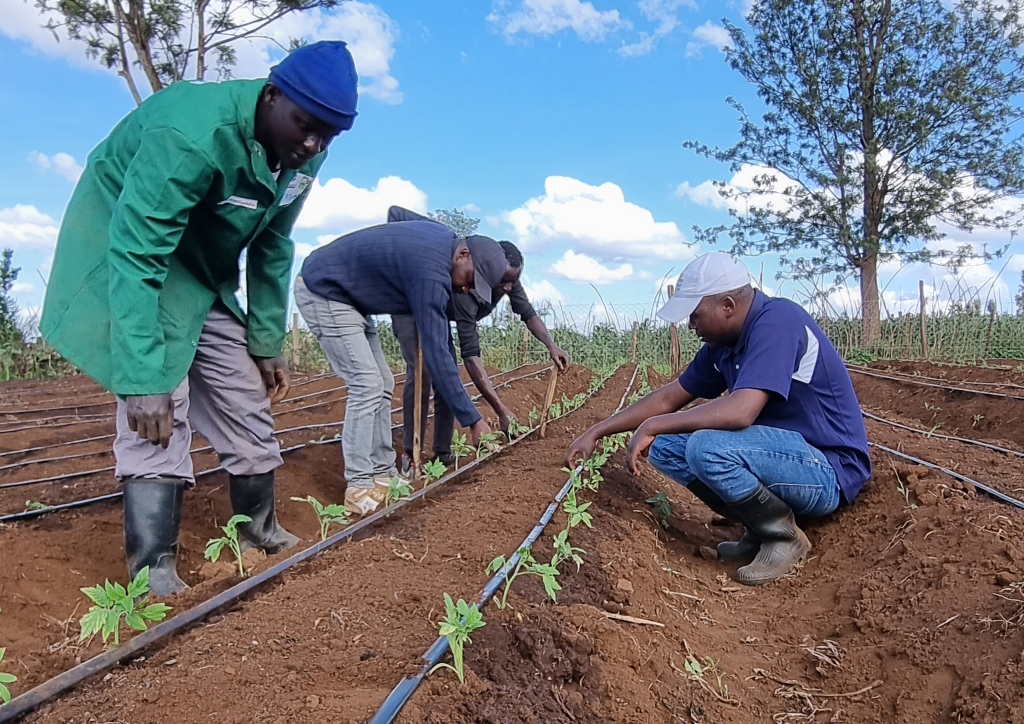
In the face of growing water scarcity and the increasing demand for agricultural productivity, implementing water conservation techniques has become paramount. One such technique gaining traction is adopting efficient irrigation methods, particularly drip irrigation, to optimize water usage and reduce waste.
Traditional irrigation methods, such as sprinklers or surface irrigation, can significantly contribute to water waste. These methods are often over-water plants, leading to runoff that not only wastes water but also leads to soil erosion. This waste has a two-fold impact: it depletes our already scarce water resources and increases our utility bills.
In this blog, we’ll dive into the significance of water conservation in agriculture and explore how implementing drip irrigation can revolutionize farming practices.
The concept of efficient irrigation

Efficient irrigation is like fine-tuning the water supply for plants, ensuring they get just the right amount they need without wasting a drop. It’s all about smart watering techniques that help crops thrive while using water wisely. By adopting these methods, farmers can slash their water usage by half, saving money on bills and doing their part for the environment.
Picture this: instead of flooding entire fields, drip irrigation systems deliver water straight to the roots, where it’s needed most. It’s like giving plants a personalized drink tailored to their exact thirst levels. Plus, these systems minimize water loss from evaporation or runoff, making every drop count.
But it’s not just about conservation; it’s about boosting farm productivity too. Efficient irrigation ensures healthier crops and higher yields by keeping plants happily hydrated. And with reduced water bills, farmers can invest those savings into their operations, creating a win-win situation for the farm and the planet.
How to implement drip irrigation
Implementing drip irrigation on your property involves a few steps:
- First, you need to plan your system layout based on the type and location of your plants.
- Next, purchase the necessary equipment, such as a drip line, emitters, and a backflow preventer.
- Install the drip line along your garden, making sure to place the emitters at the root zone of each plant.
- Connect the drip line to your water source through a backflow preventer, which prevents contaminated water from flowing back into your water supply.
- Finally, turn on the system and adjust the flow rate as needed.
Remember, maintaining your drip irrigation system is crucial to ensure its effectiveness. Regularly check for leaks or blockages and clean or replace components as needed.
Other water conservation techniques
Apart from drip irrigation, several other methods exist to conserve water effectively in agricultural practices. For instance, employing rainwater barrels allows farmers to harness nature’s bounty by collecting rainwater for irrigation. This reduces reliance on conventional water sources and ensures that every drop is used well.
Furthermore, implementing low-flow fixtures in homes is another impactful way to conserve water. These fixtures regulate water flow, minimizing wastage without compromising on functionality.
Practicing water-wise landscaping with drought-resistant plants beautifies the surroundings and conserves water by requiring less irrigation. These combined efforts contribute to sustainable water management practices, ensuring water resources are used wisely and responsibly for agricultural and domestic needs.
To sum it up
The concept of efficient irrigation represents a paradigm shift in agricultural water management, emphasizing precision, sustainability, and resource optimization. By adopting advanced irrigation technologies and best practices, farmers can mitigate the challenges posed by water scarcity and climate variability while ensuring the long-term viability of their farming operations. By embracing efficient irrigation, farmers safeguard their livelihoods and contribute to global efforts towards a more water-efficient and sustainable future.
